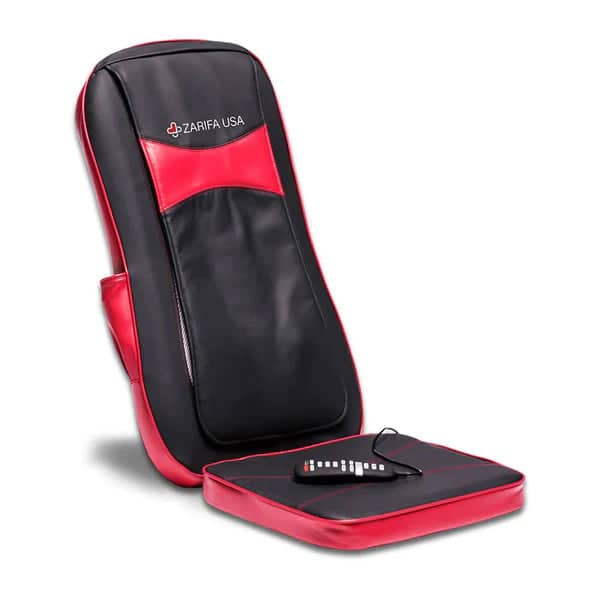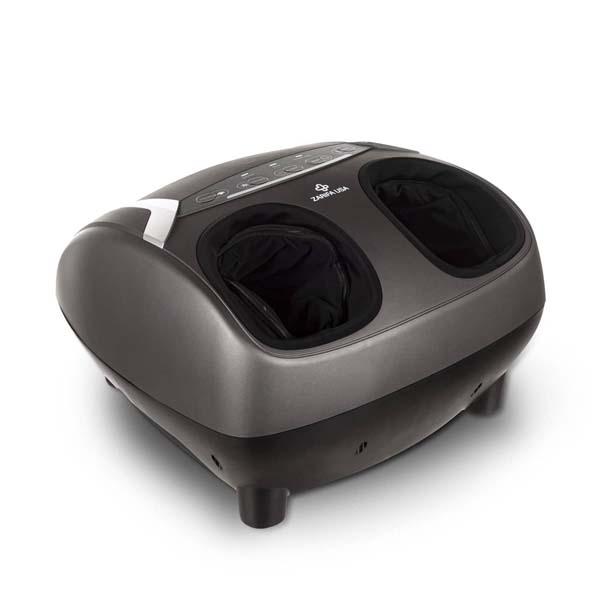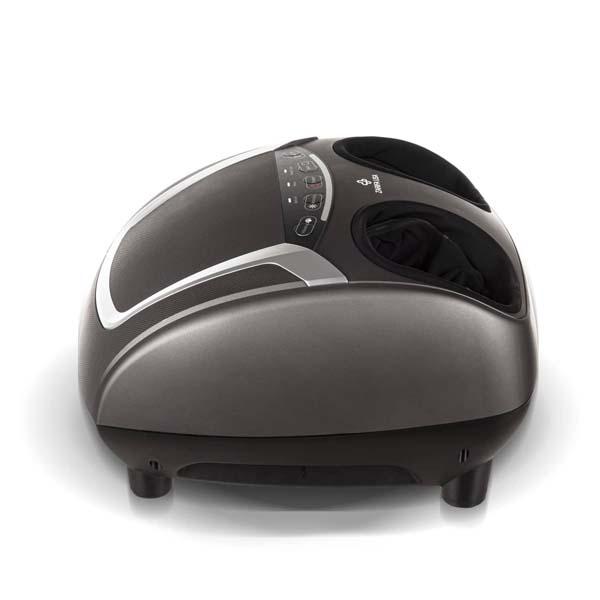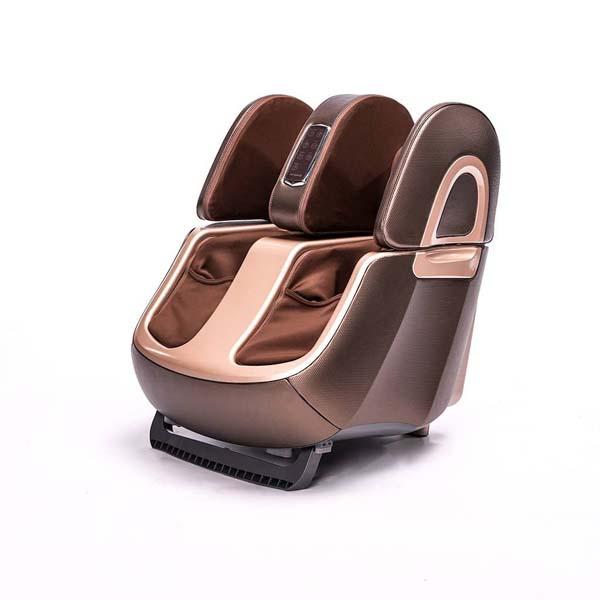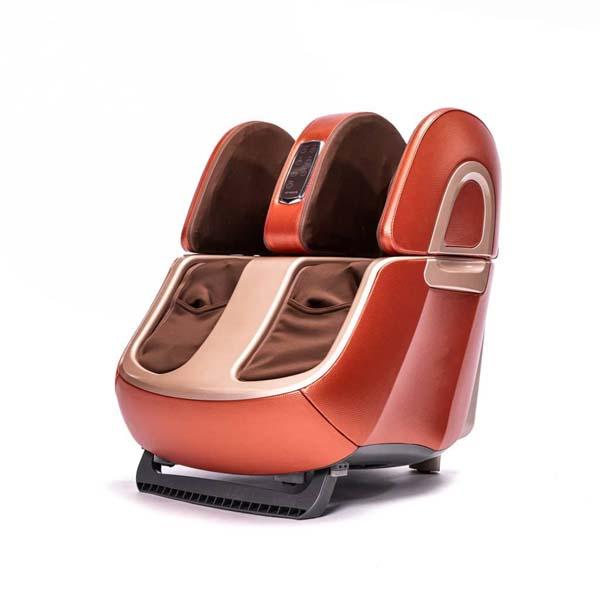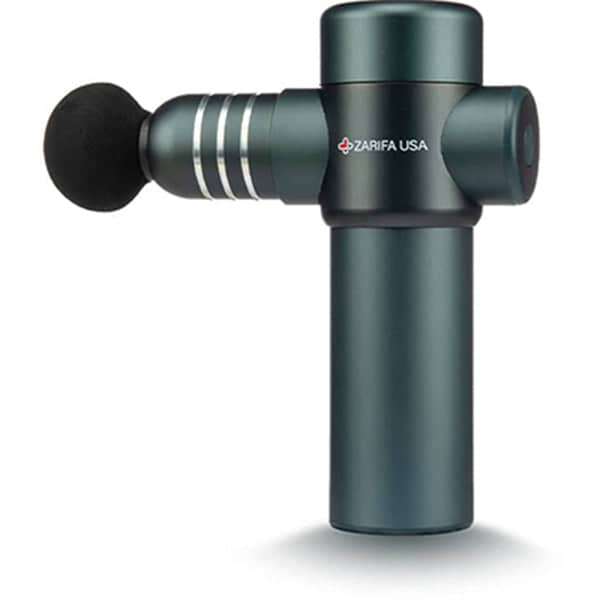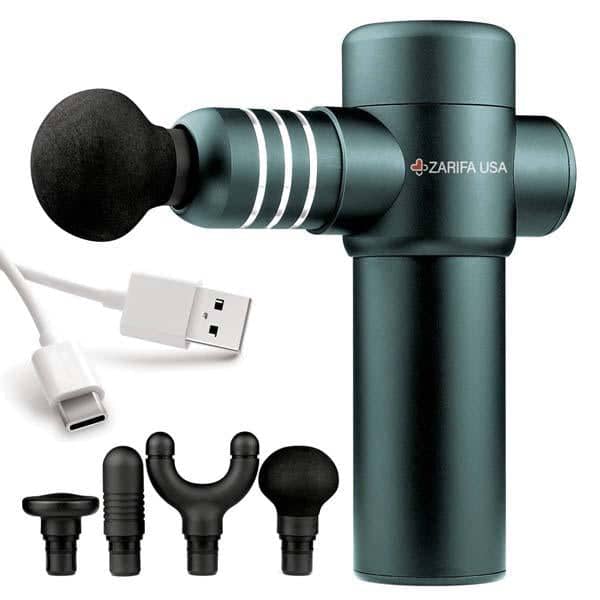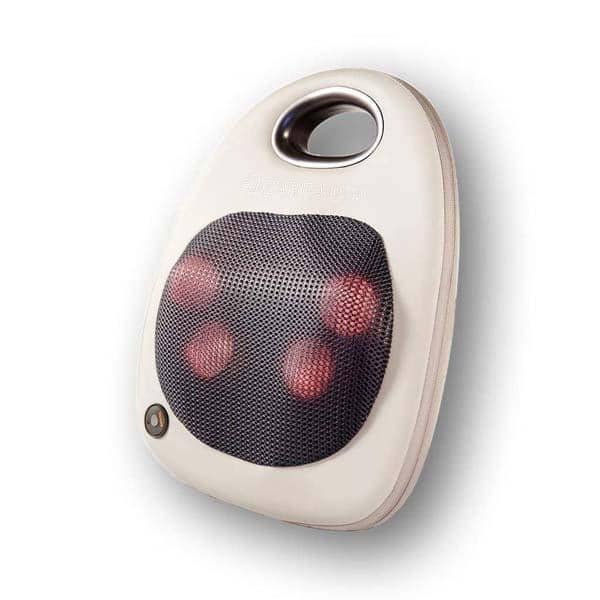Myofascial pain syndrome (MPA) is typically caused by any of the following in the list below. However, note, if you think you have medical problem please consult your physician. See your doctor or healthcare provider should you experience any of the symptoms or chronic issues listed below.
Potential causes of myofascial pain syndrome:
Overuse of the muscle
Trauma (injury)
Psychological stress
Further potential contributing factors may also include but are not limited to:
Bad posture
Small lesions
Soft tissue tension
Rheumatic arthritis
Gout
Thyroid problems
Psoriasis
Sometimes it is clear how “overuse of the muscle” could result in myofascial pain syndrome. For example, certain athletes, like a shortstop in baseball, would probably develop this syndrome in their shoulders over time. However, what about something like gout? How does that contribute to the myofascial syndrome?
Overuse of muscles is the most widespread cause of myofascial pain syndrome. Repetitive, heavy, or excessive muscle use will lead to micro-tears in the muscle fibers if not careful, ultimately causing pain and tightness. This can be especially true for athletes who put a lot of strain on their muscles.
Trauma, such as a direct injury to the muscle, can also cause myofascial pain syndrome. Let’s consider, for example, that baseball shortstop. Shortstops are known for utilizing their whole body to stop the ball from leaving the infield, resulting in injuries caused by blunt force. Hence, the ball being the “blunt force”.
Psychological stress, such as depression or anxiety, could also significantly contribute to muscle tension leading to myofascial pain. For instance, let us consider those with this syndrome because of psychological stress; if their mind is in a constant “fight or flight” mode, then their muscles and the rest of their body will match what their mind is doing, resulting in tense, stressed muscles.
In other ways, psychological stress can contribute to myofascial pain syndrome. For example, if a person feels anxious or overwhelmed, they may start to tense their muscles, leading to myofascial pain.
Or, when depressed, our bodies often become tense, again leading to myofascial pain. Additionally, if we are constantly feeling stressed or overwhelmed, our muscles can become tight and overworked, resulting in myofascial pain. Therefore, it is vital to manage our stress levels, as it can be a major contributor to myofascial pain syndrome.
Lifestyle changes such as stress management, relaxation techniques, and regular sleep can help reduce the symptoms of myofascial pain syndrome. In some cases, psychotherapy may even be recommended to help the sufferer cope with the condition.
If you are looking for the ultimate comfort source to relax your muscles and treat chronic body pains or MPS, buying a reliable massage chair is one of the best choices. Zarifa USA has been a pioneer in the development of high-quality full-body massage chairs for decades. All the massage chairs produced by Zarifa USA provide an excellent massage with guaranteed positive results. Best of all, our massage chairs are Flexible Spending Account and Health Savings Account eligible.
Bad posture is another potential cause of myofascial pain syndrome. Poor posture can strain muscles excessively and cause pain and tightness. Small lesions, such as a pinched nerve or inflammation, can also lead to myofascial pain syndrome. Soft tissue tension, such as scar tissue or adhesions, can also contribute to myofascial pain.
Rheumatic arthritis, gout, and thyroid problems can all potentially contribute to myofascial pain syndrome. Rheumatic arthritis is an autoimmune disorder that can cause inflammation and muscle pain. Gout is a form of arthritis that causes sudden and severe joint pain. Thyroid problems can also cause muscle pain, stiffness, and fatigue.
Finally, psoriasis can also lead to myofascial pain syndrome. Psoriasis is a skin condition that causes red and inflamed patches of skin that can be painful and itchy. Psoriasis can also cause joint pain, leading to myofascial pain syndrome.
And depending on how the syndrome is developed, does that affect how serious it will progress to be? Will it be debilitating? And how debilitating? Let’s discuss this in more detail in the sections to follow.
How debilitating is myofascial pain syndrome?
Myofascial pain syndrome is a common debilitating disease of the muscles and associated soft tissues. Pain radiates from one or more trigger points stimulated by pressure or by nothing at all. When it happens seemingly without provocation, that’s when the sufferer can really feel defeated. Healthcare pros ask what’s going on, and they cannot put this “type” of pain into words. And although MPS is frequently confused with fibromyalgia, it is not the same syndrome.
The severity of myofascial pain syndrome can range from mild to severe and can vary in intensity, depending on the individual and their particular symptoms. In some cases, the pain can be so intense that it can interfere with the individual’s ability to perform daily tasks.
In the worst-case scenario, myofascial pain syndrome can be debilitating. It can be so severe that it can cause complete loss of mobility or even paralysis, especially true if the trigger points are located in the spine or neck. In these cases, the individual may be unable to walk or even sit.
Zarifa’s massage guns can also help to loosen the tight fascia, reducing pain and improving mobility. Fascia is a sheet of connective tissue that wraps around, and within your muscles, tendons, and ligaments, and when it becomes too tight, it can cause pain and limit movement. Massage guns can help to loosen the fascia, allowing for an improved range of motion and reduced pain.
Symptoms of myofascial pain syndrome include pain that’s described as deep aching, throbbing, tight, stiff, or vice-like. Trigger points (a small bump, nodule, or knot in the muscle that causes pain when touched and sometimes when it’s not touched).
Other worst-case scenarios of myofascial pain syndrome can include:
Complete loss of sensation in the affected area: This can be especially true for those with trigger points in the neck or spine.
Muscle weakness: An individual may experience muscle weakness and fatigue due to the pain and inflammation caused by the syndrome.
Difficulty sleeping: The pain can cause difficulty sleeping, which can cause fatigue and mood swings.
Difficulty concentrating: The pain can cause difficulty concentrating and can interfere with the individual’s ability to work or perform daily tasks.
Pain that worsens with movement: An individual may find that the pain worsens with movement and that even the slightest movement can cause intense pain.
Pain that persists even after treatment: Even after treatment, the pain may persist, leading to further complications.
Inability to perform regular activities: The pain can cause an inability to perform regular activities, such as walking, standing, working, or even sitting.
Inability to participate in physical activities: The pain can cause an inability to participate in physical activities, such as sports, dance, or exercise.
Loss of appetite: The pain can cause a loss of appetite, leading to further health complications.
Depression: Pain and discomfort can ultimately lead to depression and anxiety, especially when you have lost the ability to do the activities you enjoy.
Myofascial pain syndrome can be debilitating and can interfere with an individual’s ability to perform daily tasks. Therefore, it is essential to seek medical attention if you are experiencing any of the symptoms associated with the syndrome. Early diagnosis and treatment can help reduce the severity of the syndrome and prevent further complications.

What is MPS in medical terms?
According to an article by the Mayo Clinic , “Myofascial pain syndrome is a chronic pain disorder. In this condition, pressure on sensitive points in your muscles (trigger points) causes pain in the muscle and sometimes in seemingly unrelated parts of your body. This is called referred pain.
This syndrome typically occurs after a muscle has been contracted repetitively. This can be caused by repetitive motions used in jobs or hobbies or by stress-related muscle tension.
While nearly everyone has experienced muscle tension pain, the discomfort associated with myofascial pain syndrome persists or worsens. Treatment options include physical therapy and trigger point injections. Pain medications and relaxation techniques also can help,”.
Massage tools can be a great aid in teaching muscles how to “relax.” Vibrational movements from the recovery Z-Smart Massage Guns provide powerful pain relief through deep tissue massage. The effects of deep tissue massage on pain relief are well documented.
The Mayo Clinic later shared some unfortunate complications associated with chronic MPS, and they might include:
Sleep problems. Signs and symptoms of myofascial pain syndrome may make it difficult to sleep at night. You may have trouble finding a comfortable sleep position. And if you move at night, you might hit a trigger point and awaken.
Fibromyalgia. Some research suggests that certain people may develop myofascial pain syndrome into fibromyalgia. Fibromyalgia is a chronic condition that features widespread pain. It’s believed that the brains of people with fibromyalgia become more sensitive to pain signals over time. Some doctors believe myofascial pain syndrome may play a role in starting this process.
What does myofascial pain syndrome feel like?
Symptoms of myofascial pain syndrome include a pain described as deep aching, throbbing, tight, stiff, or vice-like. Trigger points (a small bump, nodule, or knot in the muscle that causes pain when touched and sometimes when it’s not touched). Muscles that are exceptionally tender or sore to the touch.
Myofascial pain syndrome, known as fascia, is a chronic condition that affects the body’s connective tissue. Over time, this tissue could become inflamed, leading to a buildup of pressure and pain.
This pain is usually localized to a specific area of the body, such as the neck, shoulders, or lower back. However, it can also be felt in other areas, such as the arms, legs, or abdomen.
In addition to the deep aching sensation, other symptoms of myofascial pain syndrome can include tightness, stiffness, and tenderness in the affected area. Muscle spasms, fatigue, and even headaches can also be present.
Trigger points are a hallmark of myofascial pain syndrome and are believed to be the cause of the deep and aching pain. Small bumps, nodules, or knots are found in the affected muscles, and when touched, these areas can cause severe pain, sometimes even when they aren’t touched.
Understanding that myofascial pain syndrome can be a frustrating and exhausting condition is worthy to note. The affected area’s deep aching pain and tightness can make it very difficult to perform everyday activities or maintain a healthy lifestyle.
MPS can be managed with a combination of treatments like massage therapy, acupuncture, and other alternative therapies that assist in reducing tension in the affected area and promote relaxation.
What is the prognosis for myofascial pain syndrome?
Most symptoms resolve after a few weeks. However, some patients progress to chronic MPS. Chronic MPS persists for six months or longer.
The prognosis for myofascial pain syndrome (MPS) varies depending on the severity of the condition. Generally, most people experience a mild and temporary form of MPS, which usually resolves within a few weeks of the onset of symptoms. However, for some people, MPS can become more severe and chronic, persisting for longer than six months at times.
In most cases, the prognosis for MPS is favorable, with most people experiencing relief from their symptoms with the use of:
Physical therapy
Massage (myofascial release)
Deep tissue massage
Dry needling
Acupuncture
Diet
Lifestyle changes
Improving posture
Avoiding activities that aggravate the condition
However, for those with chronic MPS, the prognosis can be more complex and require more intensive treatment, as the condition is more challenging to treat. And just “avoiding activities that aggravate the condition” may be impossible as anything they do “aggravates” the condition, from getting out of bed to walking up the stairs or brushing their teeth. Every activity “hurts.” Even sitting.
Sometimes when the option of utilizing myofascial release massage techniques are working, maintaining that “release” through the use of a TENS unit would be most optimal.
Myofascial release is a safe and effective form of manual therapy that can relieve pain, restore range of motion and improve overall function. It can be used alone or in combination with other forms of therapy to help improve overall health and wellbeing.
For example, a TENS device can also help release fascial adhesions. TENS stands for transcutaneous electrical nerve stimulation. It is a form of electrical stimulation used to relieve pain. The TENS unit sends tiny electrical impulses through electrodes placed on the skin. These impulses stimulate the nerve endings, which can reduce pain and help relax the muscles.
Electrical stimulation also helps stimulate the release of endorphins, which are the body’s natural painkillers. In addition, the electrical stimulation can help increase blood flow to the area, which can help reduce inflammation and aid in releasing fascial adhesions.
It’s imperative to seek treatment as soon as possible to ensure the best prognosis. Early diagnosis and treatment can help reduce the severity of the syndrome and prevent further complications.
In some cases, surgical intervention may be necessary, and those may include things like:
Nerve blocks
Trigger point injections
Surgery (reserved for cases where all other treatments have failed)
Is chronic myofascial pain a disability?
Under the Social Security Administration’s guidelines, myofascial pain syndrome can be considered a disability, provided the symptoms are severe enough to prevent an individual from performing substantial gainful activity. To be eligible for Social Security Disability Income, an individual’s symptoms must last or be expected to last for twelve months.
To determine whether or not an individual is eligible for Social Security Disability Income, the Social Security Administration will evaluate the individual’s medical records to assess the severity of their condition. The medical evaluation will include an assessment of the individual’s functional capacity, including the ability to complete manual labor tasks, as well as their ability to perform mental tasks.
The Social Security Administration will also consider the individual’s work history and any other factors affecting their ability to work, such as age, education level, or any physical or mental limitations that may prevent them from performing specific tasks.
If approved for Social Security Disability Income, an individual may receive benefits for an indefinite period of time, depending on the severity of their condition. Sometimes, the individual may also be eligible for Medicare coverage after two years of receiving disability benefits.
Myofascial pain syndrome can be a debilitating condition, and individuals must understand their rights when seeking disability benefits. However, with the proper documentation and a thorough evaluation by the Social Security Administration, individuals with myofascial pain syndrome may be eligible to receive the benefits they need to support themselves and their families.
Always remember information within this article is meant for entertainment purposes only and is in no way a replacement for professional legal or psychological support. Seek appropriate advice from a legal professional should you feel it necessary. It is always best to consult with an attorney to ensure that all the necessary steps are being taken and that everything is being done correctly and in accordance to the law.
What causes myofascial pain syndrome?
In conclusion, myofascial pain syndrome can be caused by several factors, including muscle overuse, trauma, psychological stress, bad posture, small lesions, soft tissue tension, rheumatic arthritis, gout, thyroid problems, and psoriasis. While some of these causes are more obvious than others, it is crucial to be aware of all potential causes and symptoms in order to prevent and treat myofascial pain syndrome.
Symptoms may include:
Deep, aching pain in a muscle
Pain that persists or worsen
A tender knot in a muscle
Difficulty sleeping due to pain
Myofascial pain syndrome is a chronic condition, and finding the right combination of treatments can take time. However, with the right combination of medications, therapies, and lifestyle changes, it is possible to manage the condition and reduce the pain and other associated symptoms.


